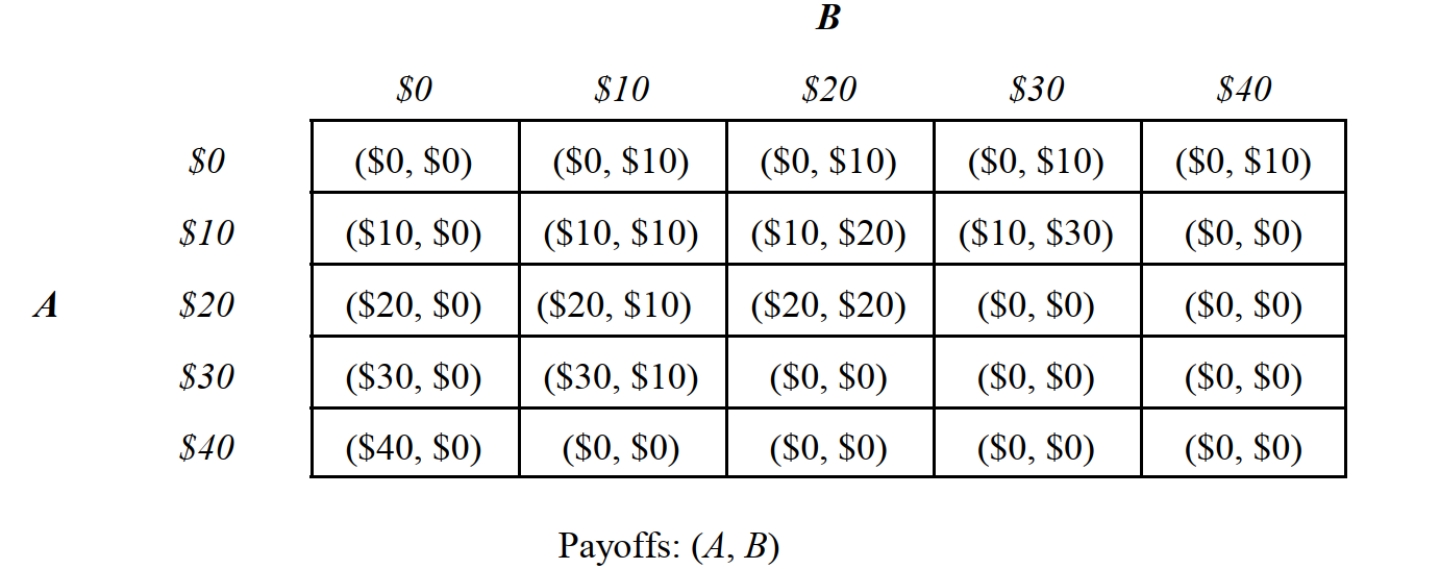Multiple Choice

-Consider the one-time Nash bargaining game depicted in Figure 12.1 in which A and B individuals are bargaining over the distribution of $40. Bids must be in increments of $10. In this game, the sum of the players' bids cannot exceed $40. If the sum of the bids are less than $40, each bidder receives his or her bid, and the rest goes to charity. If the sum of the bids exceeds $40, the bidders receive nothing, and $40 is given to charity. The most likely explanation for the outcome of this bargaining game is:
A) Backward induction.
B) Minimax theorem.
C) Cournot model.
D) Maximin decision rule.
E) Bertrand paradox.
Correct Answer:
Verified
Related Questions

